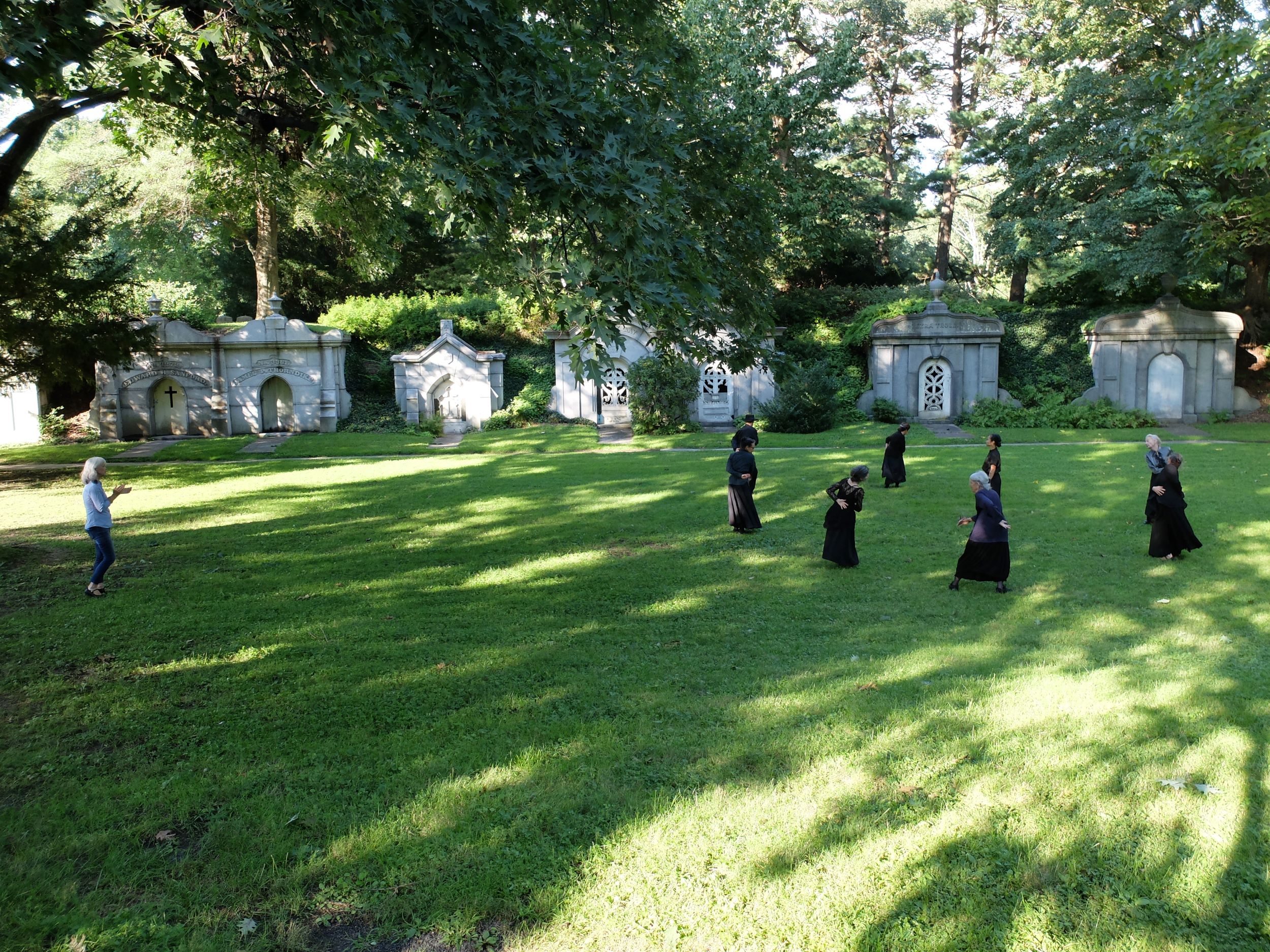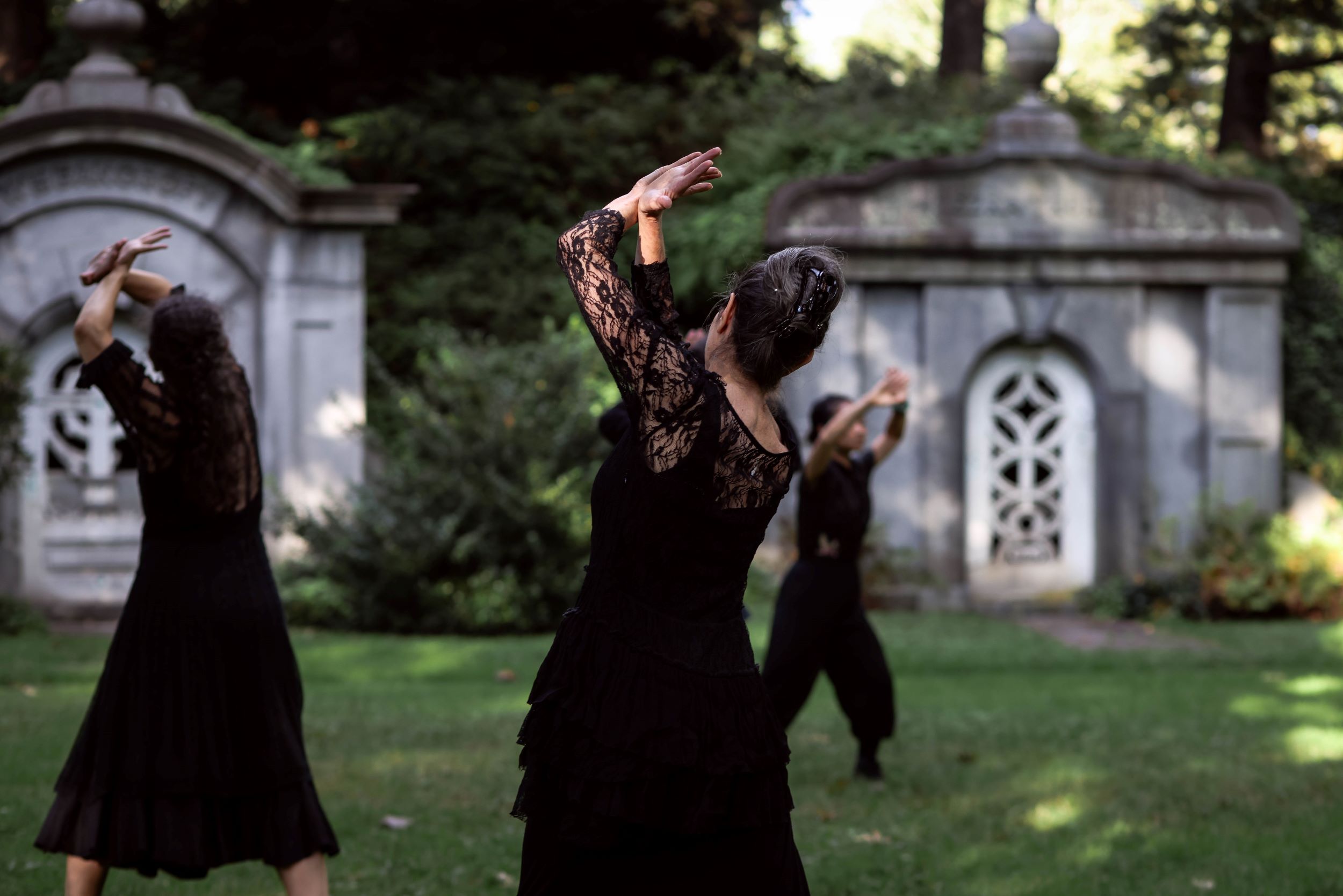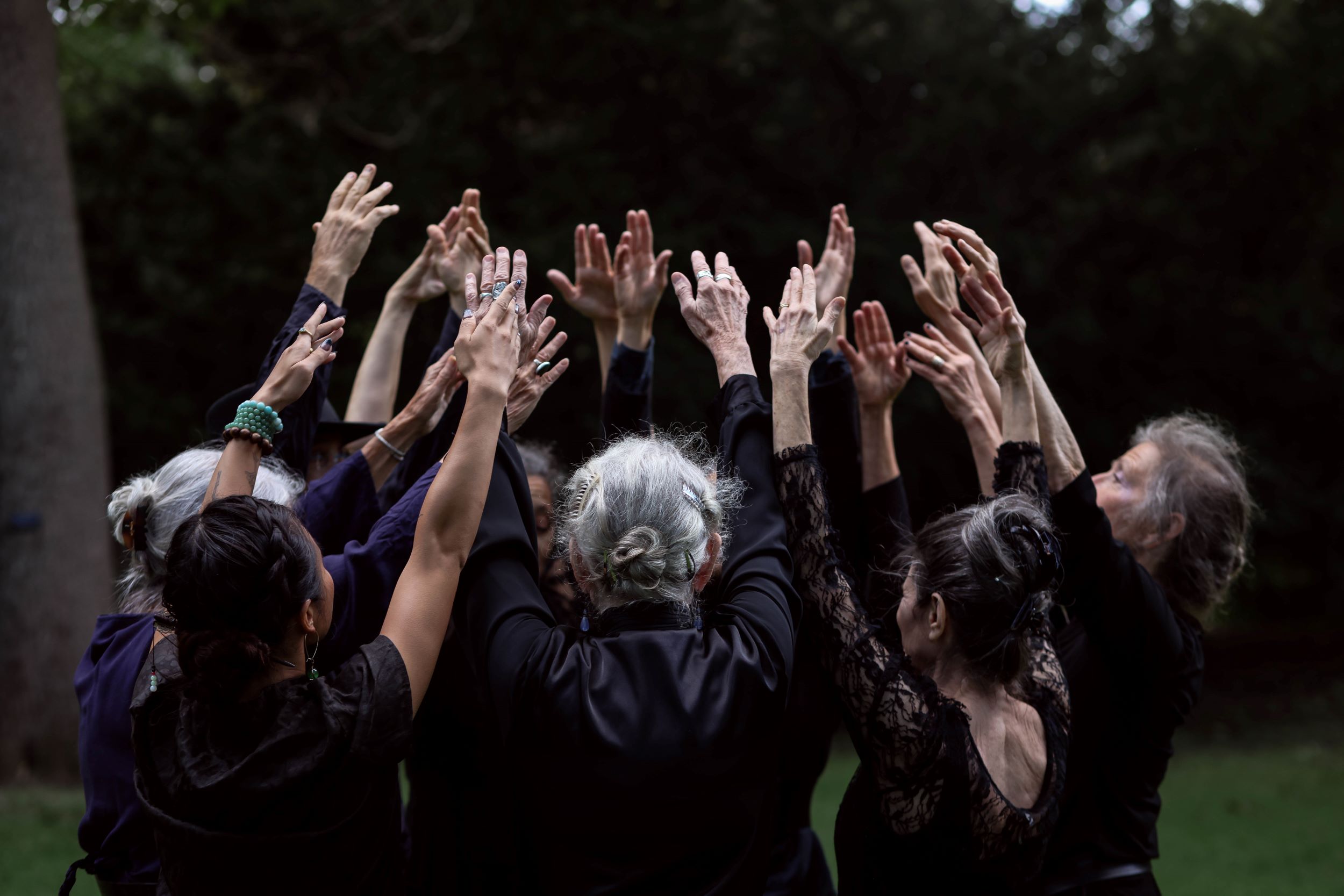Capturing Mount Auburn in Dance with Jennifer Lin
Jessica Bussmann September 1, 2021 Art

In 2021 we made mini-grants to five artists to create original works inspired by the Cemetery during a one-year period. Each of the selected artists created an original project rooted in their experiences at Mount Auburn. Meet Jennifer Lin and learn about her project, “The Gathering Place.” This interview was originally published in September 2021.
______________________________
Tell us a little bit about yourself and your art.
Most of my childhood was spent in the Midwest, but because of my father’s work at the time (1960s), our family spent a year living in Brookline and then Malden, Mass. As it happened, Virginia Williams, founder of the Boston Ballet, still had a ballet school in Malden when we lived there during my 5th year of grammar school. I went to watch my best friend’s ballet class and was hooked for life on dance. I loved the physicality and the sense of abandon and freedom dancing offered, and of course the excitement of preparing, to the best of my ability, for performance.
I am a classically trained dancer of European and Asian descent. My choreography is characteristic of Western ballet and American modern and postmodern dance traditions. Sometimes I draw inspiration from my study and research of traditional Korean dance. I think of myself as a formalist and abstract expressionist. This means movement itself, and its properties and elements, greatly inspire my dance making. Visual design excites me. I like playing with shapes, space, texture, patterns, motion, rhythm, and dynamics. I build choreography using process-driven procedures such as chance, trial and error, and improvisation. The work feels architectural in nature. The dancer-performers are also an integral part of my dance-making process. I try to build on their strengths, and they infuse the choreography with individuality, personality, and style.
This is not your first experience creating choreography for Mount Auburn. Can you tell us about your work for “A Glimpse Beyond”?
“A Glimpse Beyond” brought together and thematically connected different episodes of live music, dance, song, and poetry and dispersed the acts in various locations. The audience moved from place to place to observe the different performances.
I presented two dances for two different productions of “A Glimpse Beyond.” One was a contemporary modern solo inspired by an iconic traditional Korean folk dance, and it was connected thematically through the story of a Korean War veteran. The other dance was a reconstruction of a traditional Korean drum dance.
Those two dances were not created as site-specific work; they were pre-composed, adapted, and performed within the context of “Glimpse.” In contrast, “The Gathering Place” will be a site-specific dance. It is created for and performed in a specific non-traditional location (rather than a traditional theater), and the content of the dance is inspired by my impression and interpretation of that place, the environment itself, and research on some of the history of Mount Auburn.
Can you describe the performance that you are creating, “The Gathering Place”? Where at Mount Auburn will the dance take place?
I think “The Gathering Place” is just that, the sum of a gathering of spirits, people, plants, and animals at and within a place – Mount Auburn – and happening at a specific time and location.
The dance abstractly represents, mourns, honors, and celebrates the spirits and lives of 8-10 historic characters buried at Mount Auburn, and examines the functions and particulars of place, time, and environment. I tried to synthesize and make a coherent whole out of all of these materials.
The dance evolves in the circular landscape of Hazel Dell. The choreography is designed to match the shape of the Dell and unfold in a circular, winding configuration. There is no designated “front” from which to view the dance, and the audience can sit or stand outside of the circle and around the periphery of the performance space.
Who are the historic people you have selected as characters in “The Gathering Place”? Who inspired or surprised you during your research?
The historic people I selected:
- Amy Lowell (1874-1925, Lot 3401, Bellwort Path): poet
- Asa Gray (1810-1888, Lot 3904, Holly Path): botanist, evolutionist
- Erna Rosenberg (1911-2012, Lot 5415, Amethyst Path): peace and human rights activist, Window Shop Collective
- Fanny Parnell (1848-1882, Lot 167, Violet Path): Irish poet
- Gisela Warburg (1912-1991, Lot 10469, Azalea Path): helped Jewish refugees
- Harriet Jacobs (1813-1897, Lot 4389, Clethra Path): author
- Isabella Stewart Gardner (1840-1924, Lot 2900, Oxalis Path): art collector
- Joyce Chen (1917-1994, Lot 10466, Azalea Path): entrepreneur, restaurateur
- Julia Ward Howe (1819-1910, Lot 4987, Spruce Ave.): author, abolitionist
- Louis Agassiz (1807-1873, Lot 2640, Bellwort Path): geologist, creationist
I would like to add that even though extensive research in the archives wasn’t possible due to the Covid pandemic, I have been delighted with the research process involved with making the dance. American history has never been a favorite subject for me, but working on this project piqued my curiosity and generated a feeling of excitement for the subject matter. I especially enjoyed reading The Lively Place by Stephen Kendrick and The Lowells of Massachusetts: an American Family by Nina Sancovitch.
The things that surprised me the most include turning a page in The Lowells of Massachusetts and seeing a photograph of Percy Lowell (not buried at Mount Auburn, though many Lowells are) sitting between two Korean yang bang, or upper class men in traditional horse hair hats. The next surprise involves the curiosity and pleasure I felt engaging with early revolutionary and antebellum America and local Massachusetts history. As I researched individuals and read histories and poems, I looked at maps and books with pictures of early Boston and made timelines of other historical events so I could grasp a bigger picture and put Mount Auburn specifics in context.
The cast for “The Gathering Place” consists of dancers ranging in age from 25 to 85 years of age. Some dancers are in the early stages of an artistic career, and others came to dance in midlife or after a career in another field. I tried to match commonalities between the dancers and characters.
What are the challenges and opportunities of staging the dance within the Cemetery?
Staging a public performing arts event in the Cemetery during the time of Covid creates different circumstances in which to work. Though much information is available through the Internet and video communication, I miss live interchanges, working on-site more frequently, the nuances of an in-person work environment, and live friendly social exchanges. Some challenges include adapting to rehearsing out in public space, limited access for on-site rehearsals, scheduling around other events, and adapting plans quickly and easily in case of a downturn in the pandemic or inclement weather.
On the other hand, staging a dance event within the Cemetery is a wonderful opportunity and experience. The beautiful landscapes with grassy glades and shady wooded dells provide an inspiring, pleasant, relaxing, and peaceful environment in which to work.
In addition to your artistic work, you have visited Mount Auburn for nature and meditative walks. What is your favorite place at Mount Auburn?
I love Asa Gray Garden, the views from Washington Tower, and especially the Indian Ridge and Auburn Lake area. It’s nice to be lost in the curvy back parts of the Cemetery. I enjoy the solitude of drippy foggy days in early spring when the ground is covered with large patches of blue spring flowers and the Magnolia trees at Halcyon Lake are fat with buds before the leaves come out. I like the company of the trees when I am feeling sad or lonely, and the verticality, height, and symmetry of the Dawn Redwoods.
What is your favorite season at Mount Auburn?
I have spent time during all the different seasons at Mount Auburn. During snow and ice it’s magical, in rain introspective and peaceful, mysterious and meditative in fog, and reassuring in sunshine.



Comments
Comments for this post are closed